|
Proterebia phegea / Dalmatian Ringlet
Unazka dalmatiane
Nymphalidae - Satyrinae
Proterebia phegea (Borkhausen, 1788). TL: S. Russia.
 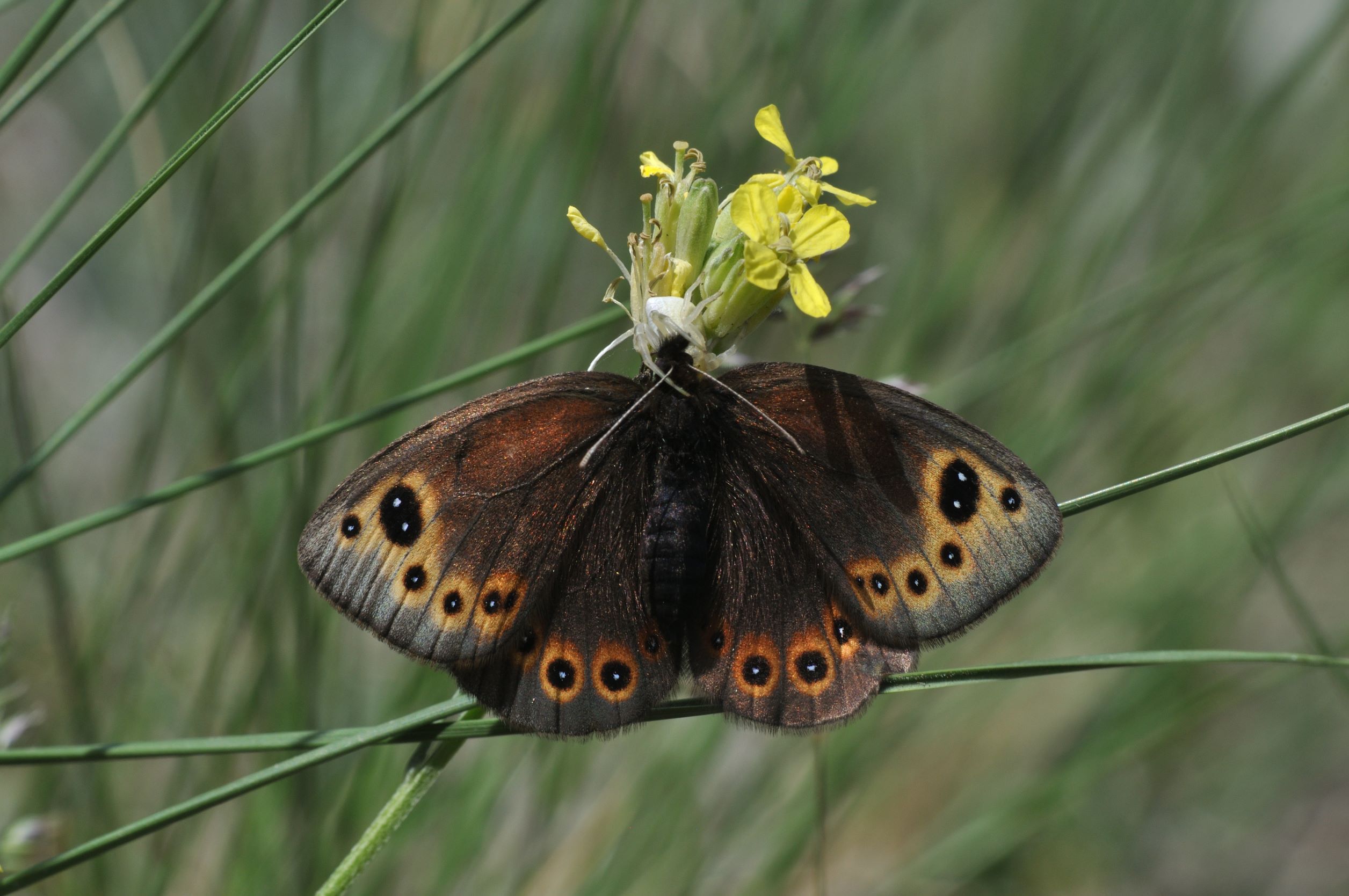
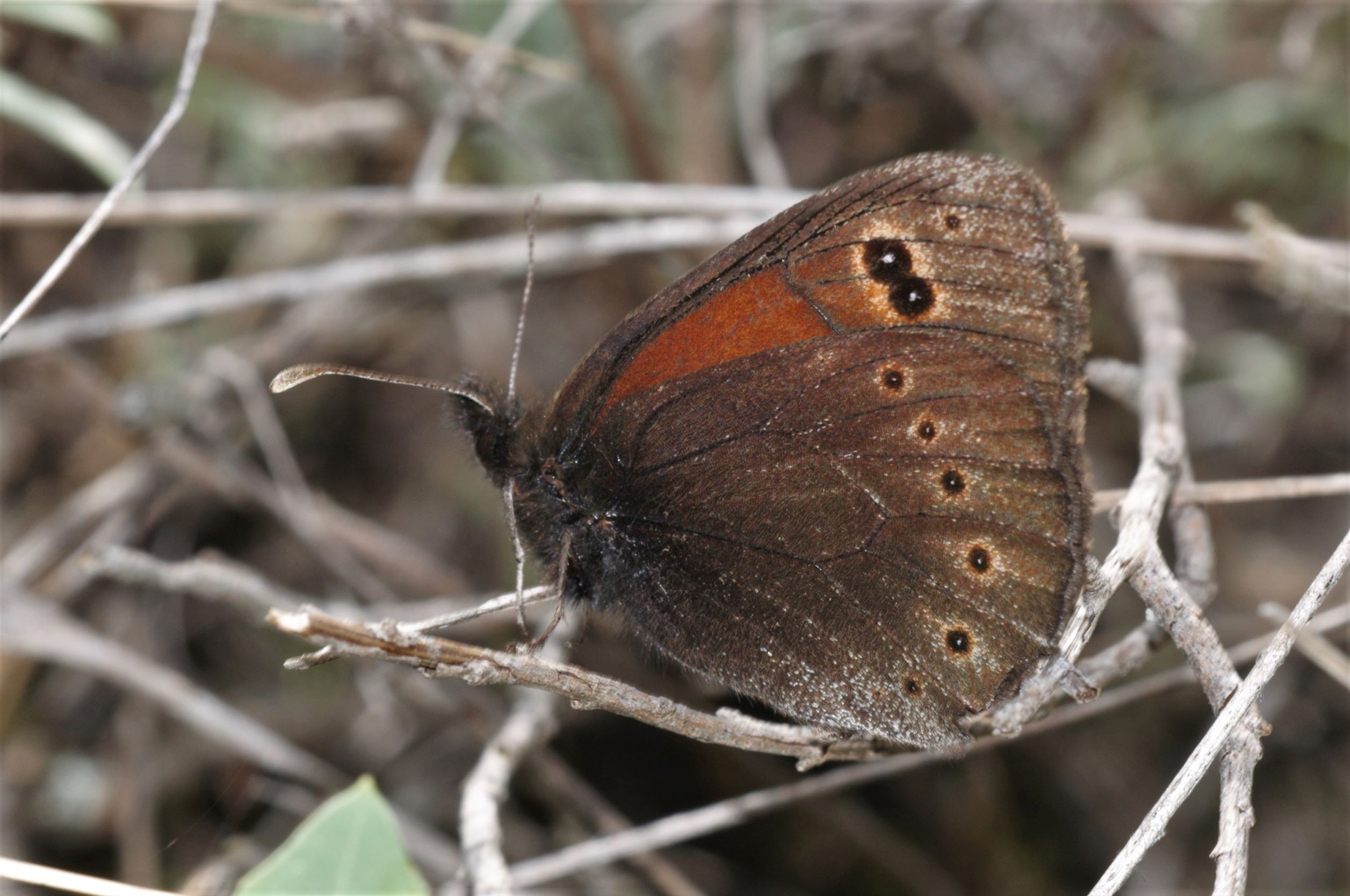 
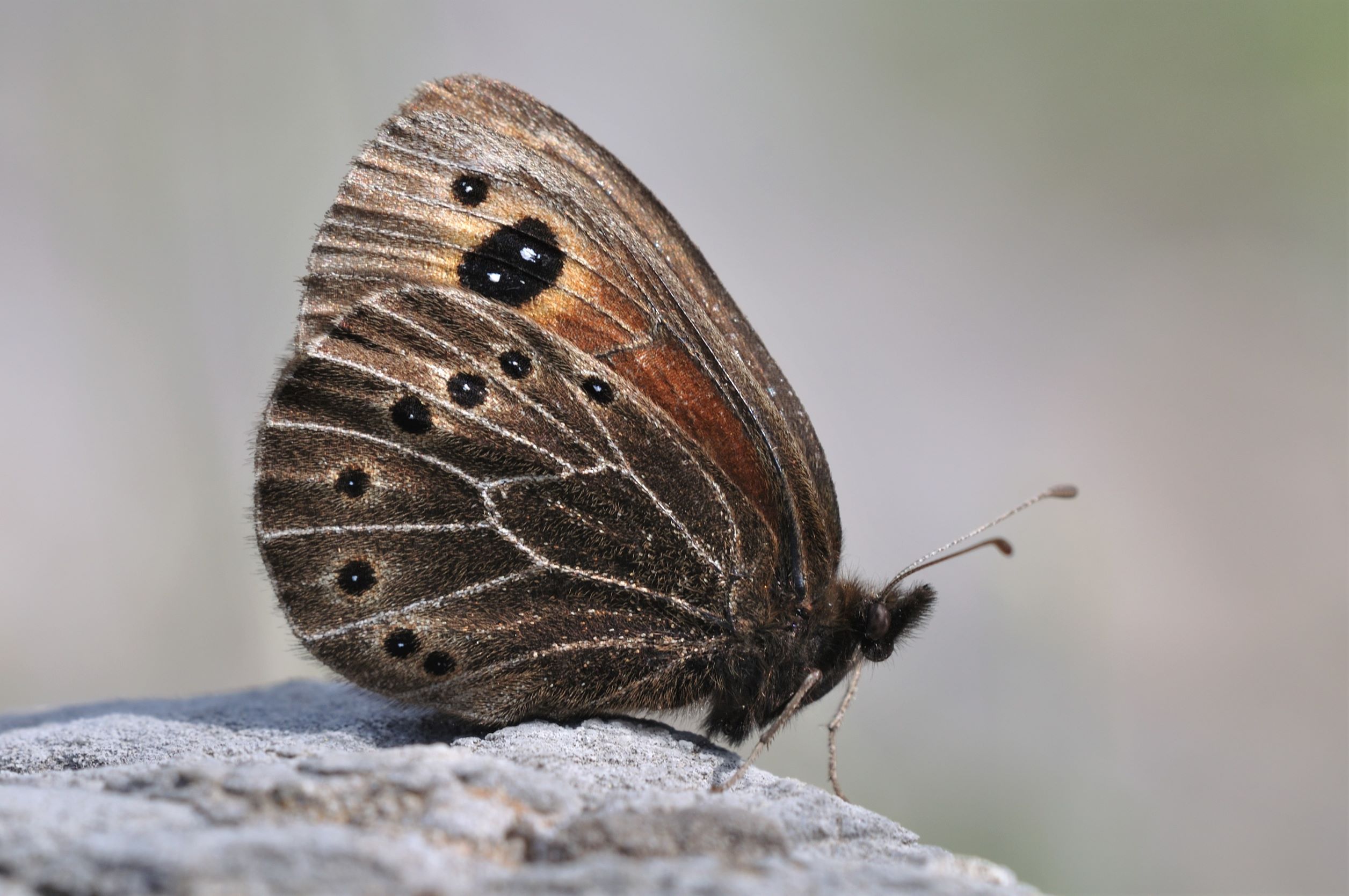 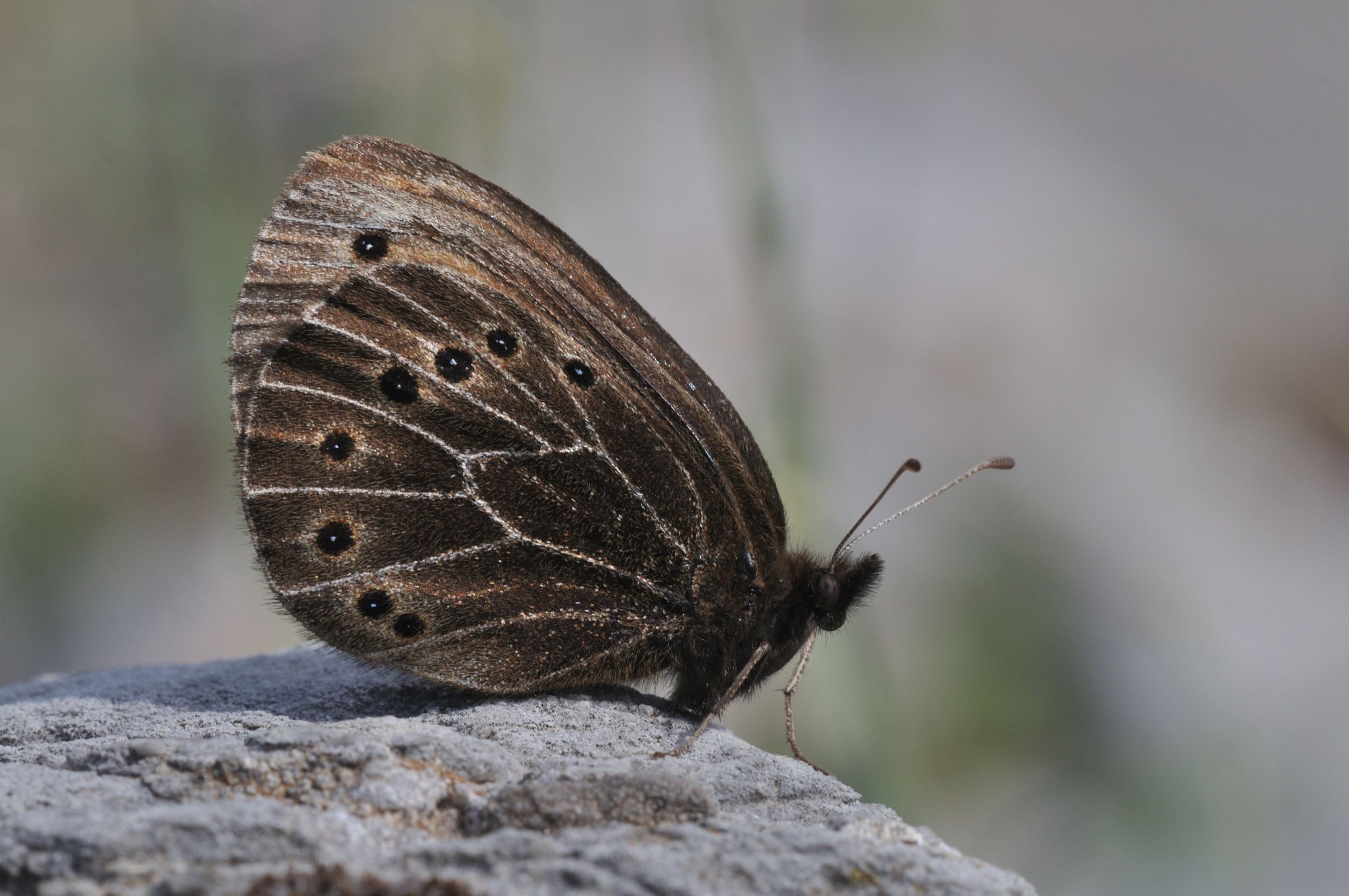
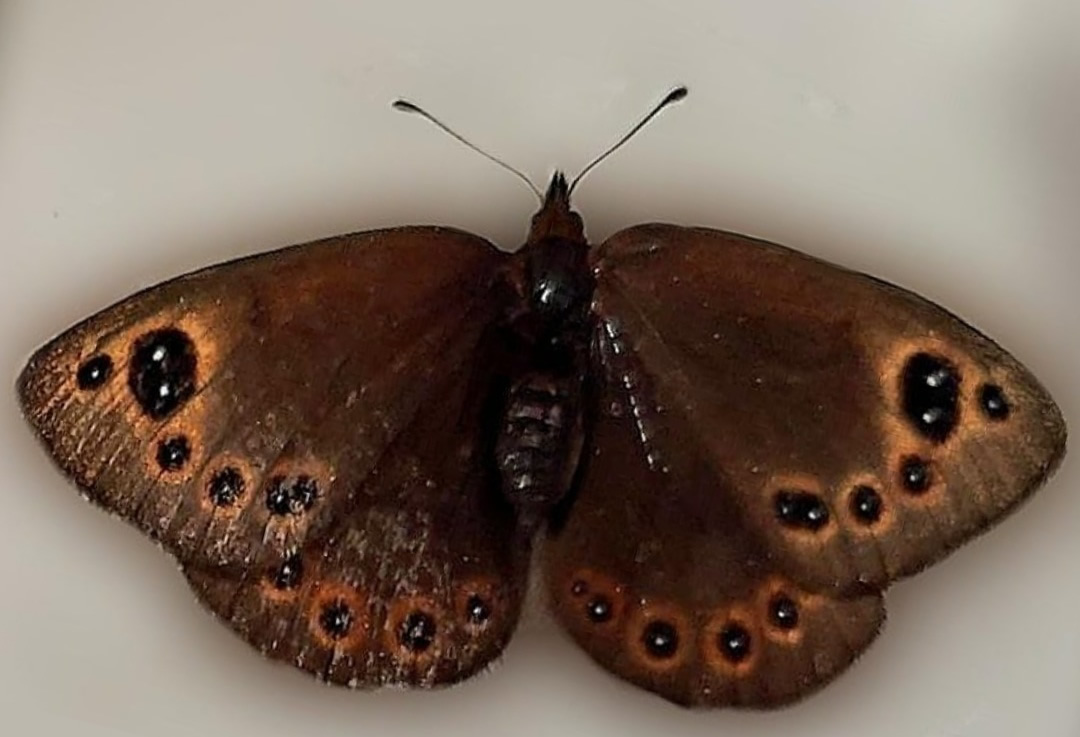 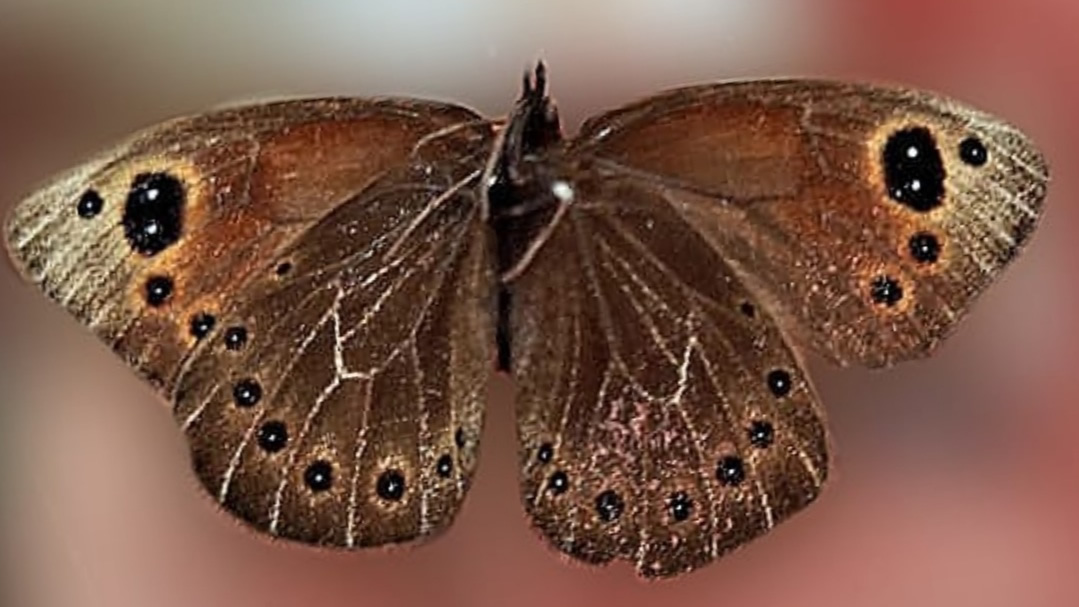
1a. Proterebia phegea, distribution map (09.i.2025).  Historical data ; Historical data ;  Additional data from the 2018 update ; Additional data from the 2018 update ;  New observations since the 2018 update. New observations since the 2018 update.
1b. Proterebia phegea ♀ upperside, caught by a crabspider. Greece (© Sylvain Cuvelier)
1c. Proterebia phegea ♂ underside. Greece (© Sylvain Cuvelier)
1d. Proterebia phegea ♂ upperside. Greece (© Sylvain Cuvelier)
1e. Proterebia phegea ♀ underside. Greece (© Sylvain Cuvelier)
1f. Proterebia phegea ♀ underside. Greece (© Sylvain Cuvelier)
1g. Prorerebia phegea ♀ upperside, 26.iv.2022. Vau-Dejës, Albania (© Marko Prendi)
1h. Proterebia phegea ♀ underside, 26.iv.2022. Vau-Dejës, Albania (© Marko Prendi)
Description
♂♂
Medium size butterfly. Fw: 22-24 mm.
Ups: brown gc.
Upf: mottled greyish apex and outer margin, fused twin apical white-pupilled ocelli in s4 and s5 and distally placed, additional ocelli in s1b (sometimes twin), s2, s3 and s6.
Uph: regular series of white-pupilled ocelli from s1b to s6.
Unf: dark red discal area, apex slightly greyish.
Unh: brown gc, inconspicuous lighter coloured veins.
♀♀
Sligthly larger.
Ups: paler brown gc, stronger marked ocelli.
Upf: less greyish apex and outer margin.
Unf: darker discal area, stronger marked ocelli.
Unh: dark brown gc, conspicuous paler veins, full series of postdiscal ocelli.
Similar species
All Erebia.
Upf: irregular, complete row of white-pupilled black ocelli.
Life cycle
Adults: single generation from end-March to May depending on altitude.
Egg: short stage.
Caterpillar: aestivating, growing in autumn and overwintering as adult larva.
Pupa: short stage.
Habitat
Proterebia phegea inhabits hot and stony grassland slopes, on limestone and ophiolite, from 250 up to 1300 m a.s.l.
Spatial requirement modest, population density can be moderate.
Foodplants
Caterpillars feed on Festuca ovina.
Butterflies feed on available flowers in early spring.
Distribution
Albania: recently discovered from Bulqizë by Verovnik & Verovnik (2022) and from au-Dejës by Prendi, Paparisto & Cuvelier (2023), (more research needed)
Balkan: AL - BG - BIH - GR - HR - NMK - MNE - RKS - RO - SLO - SRB
Europe: IB - IT - ALP - BAL* - NWE - UK - SCA - EEU
Asia Minor, Crimea peninsula, Transcaucasia, Caucasus and further east.
Conservation status
Proterebia phegea is not endangered.
Albanian Red List: NE.
IUCN Red List, category at the Mediterranean level: LC.
Useful links
Pyrgus.de
Lepiforum
Euroleps
(url) Verovnik R. & Verovnik J. 2022. First record of Proterebia phegea (Lepidoptera: Satyrinae) from Albania — Natura Croatica 31(1): 115-120.
(url) Cuvelier S., Parmentier L., Qirinxhki X. & Paparisto A. 2023. Butterflies of Albania new data and going online. Fluturatat e Shqipërisë të dhëna të reja dhe faqja online (Lepidoptera: Papilionoidea) — Buletini i Shkencave te Natyres, Tirana university. 32(2022): 5-31.
(url) Prendi M., Paparisto A. & Cuvelier S. 2023. Proterebia phegea (Borkhausen, 1788) (Lepidoptera: Nymphalidae: Satyrinae) Building bridges between the relic populations of Croatia, Bosnia-Herzegovina and Greece, a new record from northern Albania — Phegea 51(2): 59–64.
|
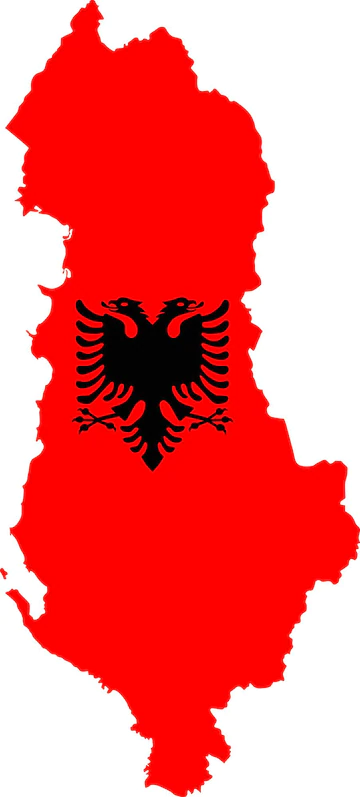 xx
xx 








 Historical data ;
Historical data ;  Additional data from the 2018 update ;
Additional data from the 2018 update ;  New observations since the 2018 update.
New observations since the 2018 update.